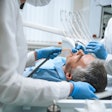A $10 billion investment in dental services for children and low-income adults is being proposed in Australia to combat the country's rising incidence of poor oral health.
The long-term goal should be for Medicare-style "universal and equitable access," according to a report released February 27 by the National Advisory Council on Dental Health. But the report also acknowledged that this type of comprehensive plan was potentially "very costly."
The council is proposing a mix of capped benefits for expensive dental care along with an expansion of services provided and funded by the states.
Any scheme would need to be managed in a fiscally responsible way and be phased in over a period of time, according to Health Minister Tanya Plibersek. It would also need to:
- Be targeted at Australians who can at least afford to pay for oral health care
- Account for gaps in existing private and public dental services, including workforce and infrastructure constraints
- Ensure funding by the Commonwealth did not duplicate, or lead to a reduction in, existing state and territory dental care services
- Account for existing Commonwealth funding of dental care and be established after the closure of the Chronic Disease Dental Scheme
The government will be considering the content of the report as it continues to examine options for public dental care in Australia, Plibersek noted.
Millions of Australians are financially locked out of the country's dental health system, undermining their ability to gain and keep employment and costing the economy more than $1 billion annually, according to a report released last December by the advocacy group Brotherhood of St. Laurence.
In addition, a third of Australians avoid or delay visits to the dentist due to the cost, an increase from about a quarter in 1994, according to a report released last May by the Australian Institute of Health and Welfare (AIHW).
And despite the introduction of fluoridation, since the late 1990s the prevalence of dental decay has increased, particularly among children in low socio-economic households where the number of caries was 1.5 times that of those in better-off areas. More than 50% of all 6-year-olds in Australia are affected by decay of their deciduous teeth, according to another AIHW report.



















